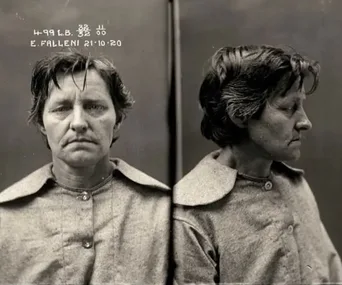By Glen Williams
Pictures: Grant Turner
Four Olympic greats discuss the magic that is the games.
On the eve of the Beijing 2008 Olympic Games, Woman’s Day lunched with four Games icons — swimmers Dawn Fraser, 70, Susie O’Neill, 34, and Murray Rose, 69, and sprinter Raelene Boyle, 57. They share their memories and hopes for our athletes heading to China.
What has been your favourite Olympic Games?
Murray: For the most part, your first Olympics are the one you remember the most. Melbourne was so special for me. There was such a wonderful community spirit in Melbourne in 1956, that all Australia was seen to be embracing the idea of having the Olympics at home, and being able to compete in front of your own people was an experience we’ll never forget. Coming into the pool for training, the place would be filled with people just wanting to watch us warm up.
Susie: Really?
Dawn: You could hardly walk down the deck of the pool because it was overflowing with people who turned out to watch us train.
Murray: The atmosphere was just so electric through the whole Games.
Dawn: I think the Opening Ceremony in 1956 was so special in the fact that the whole Australian team marched out and we were all underneath the stadium. We were waiting for Australia’s turn to march out and the electrifying moment was hearing the crowd when it was our turn to march out onto the MCG … And just as our flag appeared on the arena, there was this absolutely deafening sound of people shouting for Australia. I was so proud to be marching out onto this arena representing my country.
Murray: Preceding the opening ceremony, when we first checked into the village, the very first thing we had to do as a team was to line up for marching practice. We were put in the hands of a Drill Sergeant, a Colonel Major. And he was pretty tough. He said, “You think you’ve made it. Well, that’s nice, but you haven’t made it until you look good in the opening ceremony.” We marched in our new uniforms and new shoes for at least two hours the first day in the Olympic Village so that we’d look good in the Opening Ceremony with the snap eyes right to the Official Box, etc, etc. If you go back and look at the footage of us entering the arena, it was precision marching. They slack in today.
Raelene: Every Games is special. I have to go back to my first one in Mexico in 1968, where we were competing at over 7000 feet [2100m] and everyone was panicking whether we’d cope. A bit like the lead-in to Beijing with the smog and the heat. I was the baby of the team. I saw a man jump backwards over a bar in the high jump, and he won and revolutionised jumping forever — Dick Fosbury. I also saw Bob Beaman change long jumping forever by jumping 29 feet plus. That world record took 25 years to break. And I met the great Jesse Owens and that changed the way I addressed my sport and sport for ever. His humility and ability to cope with his fame and stay a nice person… all of those qualities I’m not seeing in a lot of today’s athletes. It was probably the greatest growth period of my life.
Susie: People probably think that I’d say Sydney 2000 was my favourite Games, but it wasn’t really, because I found that to be nerve-racking. Probably 1992 in Barcelona, my first one. When it’s all new, you walk into the Village, all different people in shapes and sizes — short people and tall people, and everything is free. When you’re 18, that’s huge.
All that free food must have been a trap for a young person.
Raelene: Absolutely.
Murray: That’s right. There are so many traps in the Olympics. It’s a unique meet. And with young girls in particular, they go into an Olympic Village and they suddenly see all this extraordinary buffet of food, which they have never seen before.
Dawn: Oh, yes. We had that problem in Barcelona with two of our swimmers getting stuck into McDonald’s. It’s madness. There is a McDonald’s in the Olympic Village and it’s all free.
Murray: And the variety… It’s time to dig in. So, anyway, the first time around it’s all so new, and that’s just an example where they tuck in and eat themselves silly and pay the price.
Susie: There were a lot of Africans over-eating. Imagine dining halls three football stadiums deep and the official restaurant is McDonald’s.
Raelene: Yes, a very poor decision by the IOC [International Olympic Committee].
Murray: Among others. [Laughter].
For more of this interview, see this week’s Woman’s Day (on sale July 28).
Your say:
Which events are you most looking forward to this year? Have your say below…
Newsletter conversion description. Get the latest in your inbox.
















.png?resize=380%2C285)




















